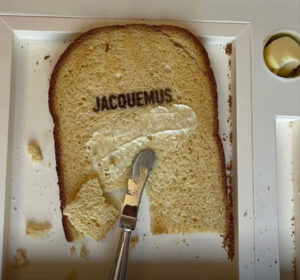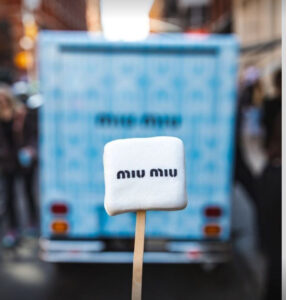
In an era where experience eclipses ownership, where senses are branded and style is no longer confined to fabric, fashion brands are boldly reshaping their cultural cachet through food. This isn’t a fleeting marketing gimmick—it is an orchestrated shift, part of a broader evolution where the once-segregated worlds of bespoke, lifestyle, and gastronomy have dissolved into one multisensory, image-driven ecosystem. At the heart of this transformation lies an alluring equation: food is fashion’s new creative medium, its edible muse, and its most visceral metaphor.
To eat is to engage. To share is to belong. And in the social currency of digital storytelling, few things are more evocative or performative than what we put on our plates. Fashion brands, attuned to this cultural truth, have begun crafting gastronomic experiences that reflect their ethos—not simply to nourish, but to narrate.
The Edible Experience: From Texture to Taste
Aesthetic has always been central to fashion, but the sensory language of texture, color, scent, and sound is expanding to embrace taste. Food is no longer just a prop in fashion’s theatre; it’s a plotline. Designers, creative directors, and marketing agencies now conceive food as a tangible manifestation of a brand’s mood board—a flavor profile that complements a runway palette or a fragrance.
A glass of citrus-infused prosecco may reflect the same notes in a summer capsule. A pistachio-hued dessert echoes the season’s color story. The layering of taste mirrors the layering of fabric. As a result, brands no longer think of campaigns as billboards or videos—they think in terms of experiences. And no experience is more universally communicative than the one that engages the mouth.
Food carries emotional memory. It recalls places, people, histories. And when paired with a brand identity, it embeds that brand deeper into the consumer’s psyche. Louis Vuitton understands this. So does Jacquemus. So does Dior.
Louis Vuitton: The Culinary Trunk and Edible Icons
No brand epitomizes the fusion of heritage and experimentation quite like Louis Vuitton, and in recent seasons, the French maison has ventured beyond monogrammed luggage into the domain of haute cuisine.
In Tokyo, Louis Vuitton opened Le Café V and Sugalabo V, two dining experiences conceived with chef Yosuke Suga. These are not just restaurants—they are edible brand temples. The cutlery, the plating, the ceiling fixtures—all nod to Vuitton’s history, while the food (delicate, seasonal, curated) channels the same sense of precision as a bespoke Keepall or Capucines bag.
Meanwhile, Louis Vuitton’s chocolate trunks—edible reimaginings of their iconic steamer trunks—are sold in limited drops, reinforcing scarcity, luxury, and playfulness. Each chocolate is stamped with LV insignia, wrapped with care, and boxed in packaging that is part sculpture, part keepsake. In these offerings, the line between fashion object and food item is gleefully blurred.
Jacquemus: From Lavender Fields to Lemonade
Simon Porte Jacquemus has never hidden his love for the Mediterranean. His visual language—sunlight, pastel, fruit, and fields—is as edible as it is wearable. And in 2023–2025, Jacquemus crystallized this aesthetic into tangible food moments.
The brand launched Jacquemus-branded lemonade bottles at pop-up events, handed out monogrammed popcorn packets at Paris Fashion Week, and even staged runway shows where guests were greeted with carefully curated Provençal snacks. For Jacquemus, food isn’t just hospitality—it is branding by immersion.
These gestures, while charming, serve a calculated purpose: to make Jacquemus not just a label you wear, but a world you enter. Every glass of lemonade is a postcard from Marseille. Every snack is a digital souvenir, pre-Instagrammed, geo-tagged, and algorithmically delicious.
Miu Miu and the Ice Cube as Iconography
No image captures the fashion-food crossover more elegantly than the now-viral Miu Miu ice cube—a pristine square of frozen water embossed with the Miu Miu logo, served in cocktails at branded soirées. That ice cube is pure semiotics. It doesn’t feed, it doesn’t hydrate. It signals.
In this cube, we see the essence of the strategy: food (or drink) is symbol, not sustenance. Just as a logo tee signals allegiance, an Instagram post of a Miu Miu cocktail becomes a flex, a form of digital identity dressing. These moments are designed to be captured, not consumed. They are temporal but eternal, fleeting but endlessly reposted.
Glazed Skin and Glossy Donuts: Hailey Bieber’s Beauty Buffet
Outside of runway fashion, Hailey Bieber’s Rhode skincare line offers another compelling case study. Her brand’s “glazed donut skin” metaphor draws directly from food culture, leveraging imagery of syrup-drenched pastries, melting frostings, and glossy textures. The visuals feature sticky cherries, dripping honey, and high-gloss sugar glazes—not for taste, but for association.
Here, skincare becomes edible metaphor, designed to evoke a feeling: sweet, indulgent, glossy, and soft. Food becomes the language through which beauty is not only described but desired. In this way, Bieber’s campaign achieves what few product ads manage—it triggers the tongue, even when selling a serum.
Burberry x Normans Café: Britishness on Toast
In 2024, Burberry partnered with Normans Café, a cult breakfast spot in London beloved for its unapologetically nostalgic British menu—think beans on toast, fish fingers, jam roly-polies. The collaboration brought a refined absurdity: trench coats next to tea cakes, classic tailoring amid grease and nostalgia.
This partnership was more than cheeky branding. It was an acknowledgment that food culture is identity culture. In borrowing from British breakfast iconography, Burberry reinforced its national roots while simultaneously subverting them. The move aligned perfectly with Daniel Lee’s vision for a more grounded, working-class luxury—less about Savile Row, more about high street meets high fashion.
Café Couture: Dior, Chanel, and Maison Kitsuné
Dior’s Café Dior pop-ups have appeared from Seoul to Miami, serving branded coffee, pastries dusted with the CD logo, and ornate lunch sets that mimic runway prints. Chanel’s Le Jardin de Tweed restaurant in Tokyo, though more permanent, follows a similar path: menus inspired by seasonal collections, interiors steeped in beige and boucle.
And then there’s Maison Kitsuné, which fused Parisian and Japanese aesthetics not only in clothing but through its wildly popular Café Kitsuné. The café offers espresso, matcha, and pastries in spaces where Fox logos adorn walls and cups alike. Customers leave not just caffeinated, but initiated.
What binds these efforts together is their spatial storytelling. Food becomes a setting—a mise en scène where brand values are made chewable, sippable, and Instagrammable.
The Strategy Behind the Sugar
So why does this all matter? What’s behind the croissant-covered trays and cocktail-hour logos? The answer is both economic and emotional.
In 2025, retail has become theater. As online shopping scales and e-commerce reduces physical friction, the in-person experience must be heightened. Food offers a reason to linger, to dwell, to post. A cookie becomes a keepsake. A drink becomes a brand ambassador.
Moreover, food unlocks something deeper: nostalgia, pleasure, familiarity. Unlike clothes—which can be exclusionary due to sizing, price, or gender—food is democratic. Everyone eats. To offer food is to offer inclusion. And when branded, it becomes a symbolic welcome—a gesture of hospitality that says: “You belong here.”
Flow
As we move further into a sensory-driven consumer landscape, the fusion of food and fashion will only deepen. Already, designers are thinking in flavor palettes, event menus, fragrance pairings. Lookbooks are starting to resemble recipe books. Runways double as dining tables.
In this new paradigm, fashion is no longer just worn—it is tasted, smelled, heard, and remembered.
Food provides the language of intimacy. When a brand curates a meal, a drink, or even an ice cube, it isn’t just feeding the body—it’s feeding the imagination. And in 2025, when digital overload makes visuals blur and branding fatigue sets in, a crisp bite or bold sip becomes a fresh way in.
In the end, food is not a distraction from fashion. It is its most honest companion. The plate, like the runway, is a canvas. And on both, the story we consume becomes the story we carry.
No comments yet.








